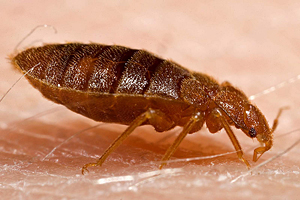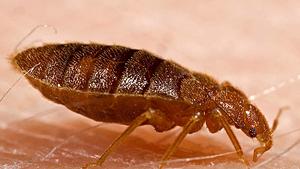Establishing a bedbug monitoring program: Start early for best results
Editor’s note: The following is the first in a three-part series on bedbugs and how to defend against them in government facilities. Ed Dolshun, the Northwest U.S. and Canada regional sales manager for Brooklyn, N.Y.-based Atlantic Paste and Glue, Professional Pest Control Products Division, wrote the series.
News reports about bedbug infestations in unexpected places, including all kinds of government facilities, are becoming common.
Consider the following news announcements:
-
Fox News recently reported that bedbugs have invaded a federal government building in Washington D.C. The pests were discovered in an office in the U.S. Agency for International Development at the Ronald Reagan Building and International Trade Center. A spokesperson for the agency was not able to say immediately how the bedbugs got into the building, but said: “I think it confirms my fear that this is getting to be an epidemic, and that it’s a problem that could happen anywhere.”
-
The Associated Press and Lincoln (Neb.) Journal Star reported that Lancaster County, Neb., court offices and courtrooms on the second floor of the County-City Building were sprayed after a bedbug infestation was discovered. A county commissioner said there was concern the bedbugs may have spread to the first and third floors, but they didn’t know yet.
-
And, according to the Chicago Tribune, bedbugs have made the leap to some of Chicago’s downtown government headquarters. Recently, Chicago Public Schools’ headquarters finished treating all 20 floors of its building after an employee reported bites.

The unfortunate reality is that the persistent bugs have re-emerged nationwide, and left unchecked, the problem is certain to grow. Government facility managers can minimize the risk of developing a serious infestation by implementing a well-planned program of bedbug monitoring.
Proactive bedbug monitoring means keeping a watchful eye out for the appearance of bedbugs at the earliest point of invasion. By instituting a program to identify their emergence, infestations can be nipped in the bud. That means bedbugs can be limited to the fewest possible locations, chemical application lessened and, above all, the damages to reputation, customer and worker confidence and the bottom line can be avoided.
Why monitoring is the first line of defense
By monitoring, government facility managers can identify the problem before it has a chance to increase to the point where people start reporting bites. At that stage, the problem has gained a foothold, just like at the school headquarters that had to treat 20 floors.
Bedbug infestations are no trivial matter. According to a recent report from the American College of Allergy, Asthma and Immunology, bedbug allergic reactions are often untreated and misdiagnosed. For most people, bedbug bites may appear only as mildly itchy red marks. But those who are allergic can experience intense itching, swelling, redness, hives and blisters that can lead to infection.
The first step of a monitoring program
One of the most important considerations of a monitoring strategy is to understand the bugs’ traits and habits. For example, bedbugs tend to favor dark and undisturbed locations; areas with little air movement. They frequently inhabit spaces between bedding where the creases provide an ideal harborage. Their biology dictates that they will want to seek out warm-blooded hosts to feed upon, so they will always gravitate to locations where people and sometimes pets typically rest for extended periods. In fact, there is a significant level of science clearly indicating that infestations will be focused somewhere near where a person sleeps, on a couch or reclining chair. Basically, the pests want to stay as close to the host as possible.
Simply put, devising an effective monitoring strategy is best accomplished by knowing the “ins and outs” of bedbug habits and preferences. That can be translated into a monitoring program that can be effective, targeted and productive in terms of offering first-line protection.

Ed Dolshun is the Northwest U.S. and Canada regional sales manager for Brooklyn, N.Y.-based Atlantic Paste and Glue, Professional Pest Control Products Division. He spent 17 years as an environmental specialist for the Bergen County, N.J., Division of Community Development, where he also served as administrator for a federally funded lead-based paint abatement program.
Check Government Product News throughout the year for descriptions of pest-fighting products. The Facilities and Parks & Recreation one-stops on Govpro.com have information on pest control products.




















